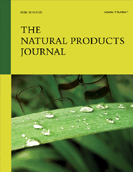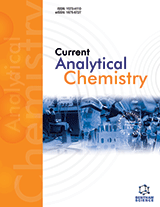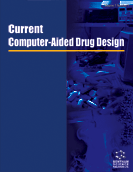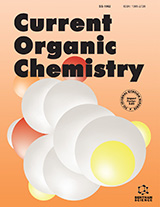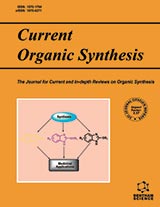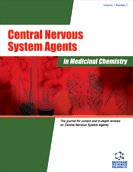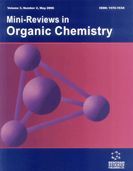Abstract
Background: The cocoplum (Chrysobalanus icaco, L) is in the Chrysobalanaceae family. It has a pantropical distribution, with 18-20 genuses and at least 500 species. This family is comprised of trees and shrubs, with alternating, simple leaves with stipules (small and deciduous).
Objective: The objectives of this study were to determine: (1) the fatty acid profile in cocoplum (Chrysobalanus icaco, L) seed oil by High Resolution Gas Chromatography (HRGC), (2) the melting point by Differential Scanning Calorimetry (DSC). In addition, the relatively high concentration of unsaturated fats makes it a potentially nutritious food. This includes oleic acid (C18:1) and a low concentrations of lauric (C12:0), myristic (C14:0) and palmitic (C16:0) acids. Method: HRGC and DSC. Results: The melting point of 24.29 ºC makes this a vegetable oil. Conclusion: Since it has 4 to 5% solids at body temperature (36.5 to 37 °C), it would be useful in the food industry.Keywords: Cocoplum, Chrysobalanus icaco, conjugated linoleic acids, unsaturated fats, vegetable oil, seed oil.
Graphical Abstract
The Natural Products Journal
Title:Characterization of the Lipid Fraction of Cocoplum Seeds (Chrysobalanusicaco, L) for Use in the Food Industry
Volume: 7 Issue: 3
Author(s): Andréa Almeida Mello, Cristiane Hess Azevedo-Meleiro, Armando Ubirajara Oliveira Sabaa-Srur, Renato Grimaldi and Robert E. Smith*
Affiliation:
- Park University, Parkville, MO 64152,United States
Keywords: Cocoplum, Chrysobalanus icaco, conjugated linoleic acids, unsaturated fats, vegetable oil, seed oil.
Abstract: Background: The cocoplum (Chrysobalanus icaco, L) is in the Chrysobalanaceae family. It has a pantropical distribution, with 18-20 genuses and at least 500 species. This family is comprised of trees and shrubs, with alternating, simple leaves with stipules (small and deciduous).
Objective: The objectives of this study were to determine: (1) the fatty acid profile in cocoplum (Chrysobalanus icaco, L) seed oil by High Resolution Gas Chromatography (HRGC), (2) the melting point by Differential Scanning Calorimetry (DSC). In addition, the relatively high concentration of unsaturated fats makes it a potentially nutritious food. This includes oleic acid (C18:1) and a low concentrations of lauric (C12:0), myristic (C14:0) and palmitic (C16:0) acids. Method: HRGC and DSC. Results: The melting point of 24.29 ºC makes this a vegetable oil. Conclusion: Since it has 4 to 5% solids at body temperature (36.5 to 37 °C), it would be useful in the food industry.Export Options
About this article
Cite this article as:
Mello Almeida Andréa, Azevedo-Meleiro Hess Cristiane, Oliveira Sabaa-Srur Ubirajara Armando, Grimaldi Renato and Smith E. Robert*, Characterization of the Lipid Fraction of Cocoplum Seeds (Chrysobalanusicaco, L) for Use in the Food Industry, The Natural Products Journal 2017; 7 (3) . https://dx.doi.org/10.2174/2210315507666170102150928
| DOI https://dx.doi.org/10.2174/2210315507666170102150928 |
Print ISSN 2210-3155 |
| Publisher Name Bentham Science Publisher |
Online ISSN 2210-3163 |
 23
23 1
1 1
1
- Author Guidelines
- Bentham Author Support Services (BASS)
- Graphical Abstracts
- Fabricating and Stating False Information
- Research Misconduct
- Post Publication Discussions and Corrections
- Publishing Ethics and Rectitude
- Increase Visibility of Your Article
- Archiving Policies
- Peer Review Workflow
- Order Your Article Before Print
- Promote Your Article
- Manuscript Transfer Facility
- Editorial Policies
- Allegations from Whistleblowers
Related Articles
-
Disintegrins from Snake Venoms and their Applications in Cancer Research and Therapy
Current Protein & Peptide Science The Pro-Survival Function of Akt Kinase can be Overridden or Altered to Contribute to Induction of Apoptosis
Current Cancer Drug Targets Outcomes in Older Versus Younger Patients Over 96 Weeks in HIV-1– Infected Patients Treated with Rilpivirine or Efavirenz in ECHO and THRIVE
Current HIV Research Cancer Cachexia: One Step Ahead
Reviews on Recent Clinical Trials The Effect of Antihypertensive Agents on Insulin Sensitivity, Lipids and Haemostasis
Current Vascular Pharmacology Identification and Characterization of Peptides and Proteins in Doping Control Analysis
Current Proteomics HIV Infection and Myocardial Infarction
Current HIV Research Integrative Physiology of Orexins and Orexin Receptors
CNS & Neurological Disorders - Drug Targets Murine Models of Atherosclerotic Calcification
Current Drug Targets Patent Selections
Recent Patents on Cardiovascular Drug Discovery Apoptosis and Oxidative Stress-Related Diseases: The p66Shc Connection
Current Molecular Medicine Old and New Drug Targets in Diabetic Retinopathy: From Biochemical Changes to Inflammation and Neurodegeneration
Current Drug Targets - CNS & Neurological Disorders Plant Troponoids: Chemistry, Biological Activity, and Biosynthesis
Current Medicinal Chemistry Sirtuins: Nodes Connecting Aging, Metabolism and Tumorigenesis
Current Pharmaceutical Design The Cytoprotective and Anti-cancer Potential of Bisbenzylisoquinoline Alkaloids from <I>Nelumbo nucifera</I>
Current Topics in Medicinal Chemistry Recent Updates on Novel Approaches in Insulin Drug Delivery: A Review of Challenges and Pharmaceutical Implications
Current Drug Targets Interstitial Cystitis / Painful Bladder Syndrome (IC/PBS) Dilemmas in Diagnosis & Treatment
Current Women`s Health Reviews Patent Selections:
Recent Patents on Cardiovascular Drug Discovery Lassa Virus Genome
Current Genomics Editorial from Guest Editor [Hot Topic:Kangaroo Mother Care: Past, Present and Future (Guest Editors: Nathalie Charpak and Juan Gabriel Ruiz)]
Current Women`s Health Reviews


